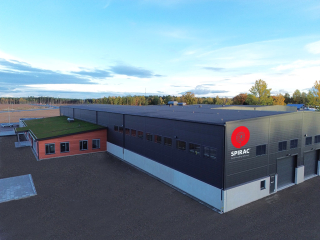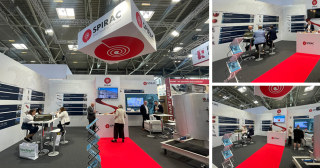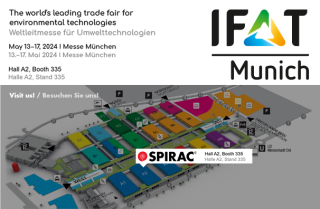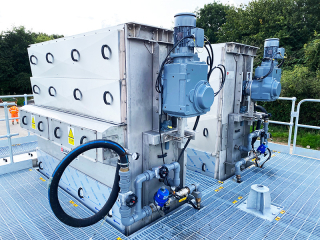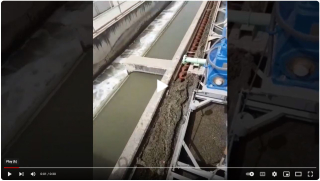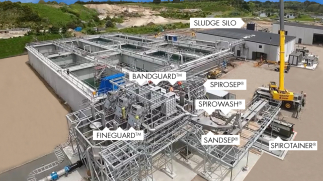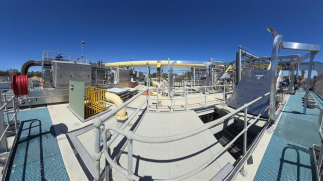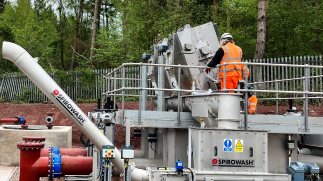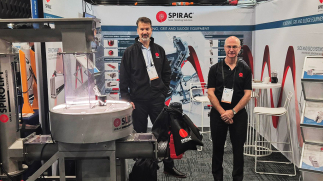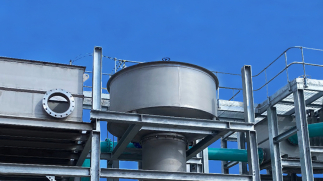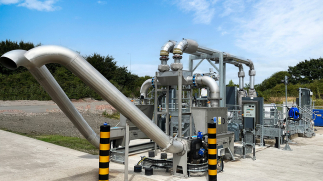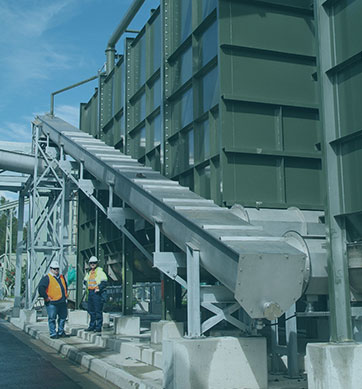- Asia Pacific News
- Europe News
- North America News
- Shaftless Spiral Conveyors

VafabMiljö Kommunalförbund upgraded the biogas facility at the Västerås waste facility to increase biogas production. It is a plant that primarily digests source-separated food wastes from the region. Other materials that are digested are floating substrates, such as sludge from grease-removal tanks and packaged foodstuffs.
Part of the biogas plant upgrade project was installing two in-ground receiving hoppers, shaftless spiral conveyor systems and machinery for food waste pre-processing and packaged foodstuffs. Food waste gets delivered on-site by garbage trucks, containers and front loaders.
THE SOLUTION
SPIRAC was asked to design and manufacture two in-ground receival hoppers with shaftless spiral conveyor systems. The facility requires a high level of accessibility for ongoing services, supervision and maintenance. The equipment was set up in a way that makes it easy to perform service, maintenance and cleaning. The sections of the facility requiring servicing and maintenance are all accessible from the floor or service level.
The receival hoppers are impermeable to avoid liquid waste leakage. The hopper can handle frozen food waste and is connected to the biogas facility’s ventilation system.
Before the upgrade, the incoming waste was handled with a front loader and unwanted material was removed by hand. The new hoppers have been designed in a way that no manual handling is necessary. A front loader can unload food waste into one of the former receival hoppers, integrated into the new waste receival system. This hopper will also be used in winter time, when the waste may be frozen.
In the pretreatment area, the material is being reduced to a particle size of max. 12 mm.
The shaftless spiral conveyors out-loading the waste from the receival hopper are on a 30 degrees incline. The conveyors have lids that can be opened for inspection.
Each hopper has its own closing lid, which is closed during regular operation. The operation of the hopper lids is done hydraulically. The hoppers are equipped with safety systems that prevent people working next to the hoppers from coming into contact with rotating discharge screws or be injured by the lids. Laser barriers have been installed to avoid personal injuries when lids/or screws are moving.
The hopper can handle two truckloads, each with up to 10 tons of food waste, one after the other. Each hopper has a discharge capacity of 20 tons/hour.
SPIRAC PRODUCTS USED1. Two Receival Hoppers with Lids |
CHALLENGES:
Different types of trucks are dispatching waste and they all have to be able to reverse onto the hopper and fit their garbage into the hopper. Clusters of paper waste bags stick together inside the truck and fall out as large clods with a risk to hit and damage the open lids. The lid has been reinforced and can be dismounted for service reasons. Drive units are mounted in a push set up, positioning the conveyor drives at the bottom of the hopper. Waterproof seals were used to guarantee no leakage will occur. Last but not least our controls were integrated with the existing control system on-site.
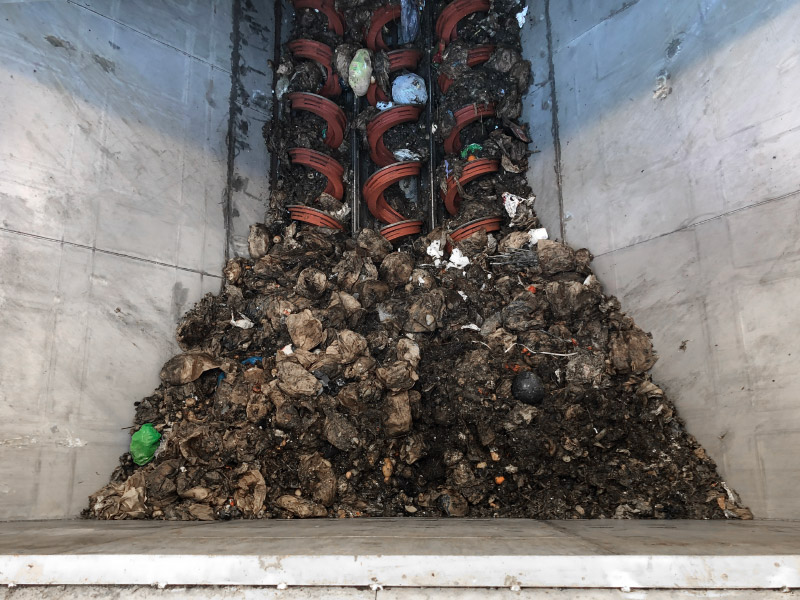
CAPACITIES
- Outloading capacity per hopper 20 tons/hour (Bulk density of waste at least 500 kg/m3)


